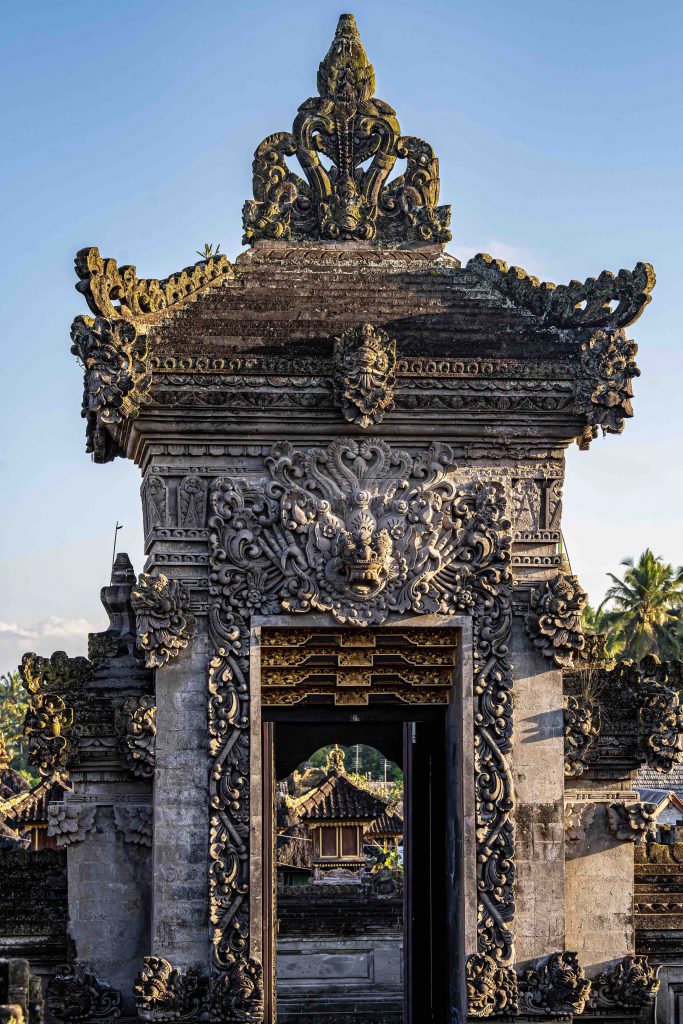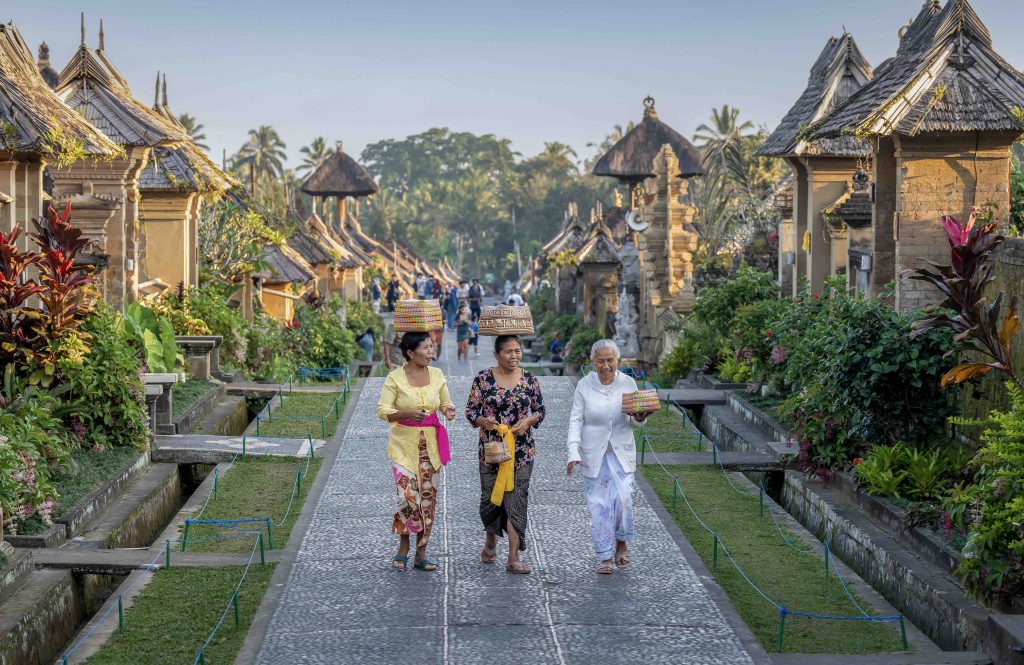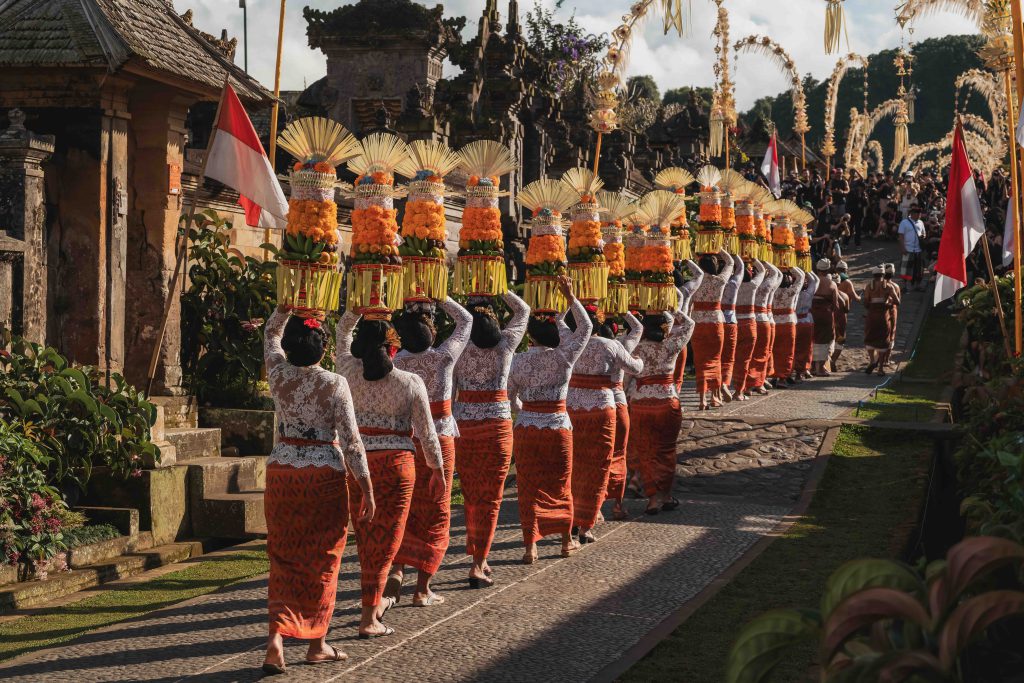Khanh Phan
Bali is a paradise island in Indonesia, known for its peaceful and scenic natural beauty. While Bali is typically associated with stunning beach resorts, many visitors are unaware of Penglipuran village, which preserves unique indigenous cultural traditions.

Located about 45 km from Denpasar, Penglipuran lies in the Batur mountain range in eastern Bali. Set at an altitude of about 600 meters above sea level, the village enjoys a cool climate, with temperatures around 16°C at night and 24°C during the day.
Recognized by UNESCO as a World Heritage site since 1970, Penglipuran is dubbed “the cleanest village in Bali”, with orderly paths and a fresh atmosphere. This village is also unique in its preservation and maintenance of its distinctive local culture. Early each morning, the villagers perform sacred rituals. Each household prepares a small selection of offerings – including flowers, rice, and various homemade rice and coconut cakes – to be ceremoniously displayed at the entrance of their homes. From 9 AM, the village opens its doors to visitors.
Upon entering the village, tourists will see Pura Desa Temple, its traditional architecture decorated with intricate details and finely crafted structures. Behind the temple is a vast, refreshing bamboo forest. The village’s main building serves as a community gathering place and is well worth a visit. During festivals or special events, villagers congregate here. In this space, adults teach children to play musical instruments and perform the Legong dance, which has influenced the island’s architecture and sculptures.

In Penglipuran, each house resembles a garden with a traditional arched gate. A small drainage canal runs in front of each house, crossed by charming bridges. Uniformly planted flowers adorn each property, and stone paths link areas like living rooms, kitchens, ancestral altars, and some homes with separate guest rooms.
Hungry visitors can stop by small eateries tucked inside each property to enjoy traditional cakes made from flour and coconut pulp or refreshing natural drinks made from “cemcem” leaves, offering a uniquely sour taste found only in Penglipuran village.
Tourists can also explore how traditional local handicrafts are made, with Batik fabric-making being the most notable. The cloth is meticulously painted with beeswax and dyed to create scarves, blouses, and skirts worn by women in the village. Residents also sell souvenirs, including bags, Bali sarongs, and uniquely shaped masks.

After 4 PM, the number of tourists begins to decline. The village glows in the golden hues of dusk as residents prepare offerings for the temple. Women often wear vibrant traditional dresses for these rituals, moving gracefully along the hillside paths with woven baskets balanced on their heads.
From 5 PM onward, the village grows quiet, and temperatures gradually drop, restoring Penglipuran’s tranquility as the scent of incense drifts from its temples. After the rituals end, residents engage in lively festivities. Staying in Penglipuran offers the chance to experience a minimalist, clean lifestyle at local homestays. Overnight guests enjoy greater immersion with the friendly and hospitable locals.
Tourists often visit Penglipuran in the summer, starting in June, and during Bali’s festival periods from July to September. During these times, the village is beautifully decorated and hosts various artistic activities, leaving visitors with unforgettable impressions.










